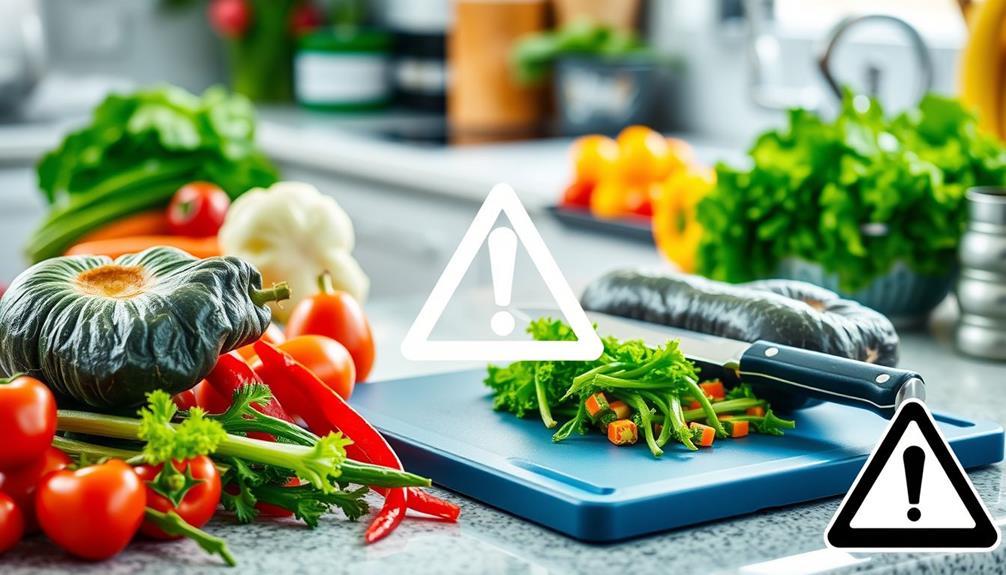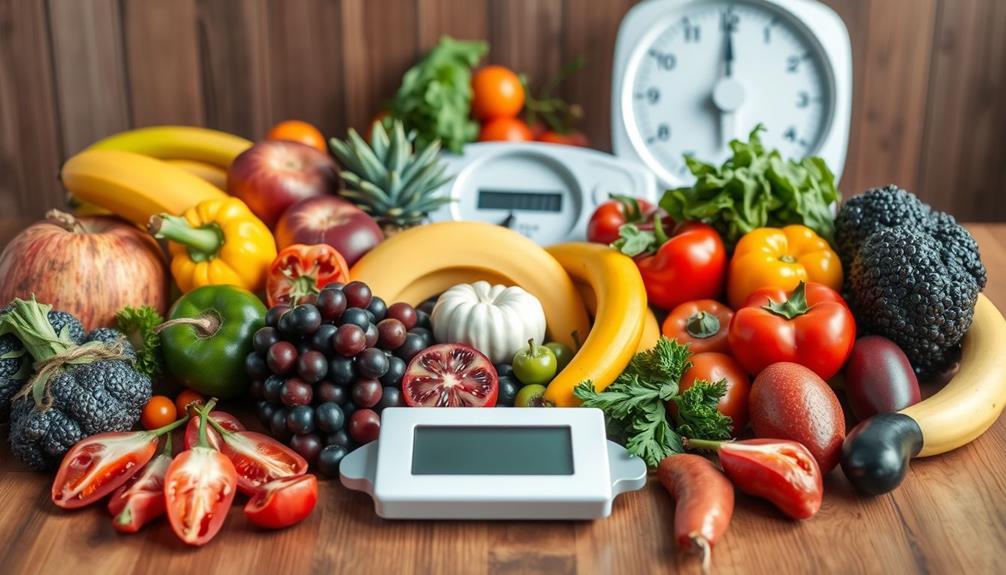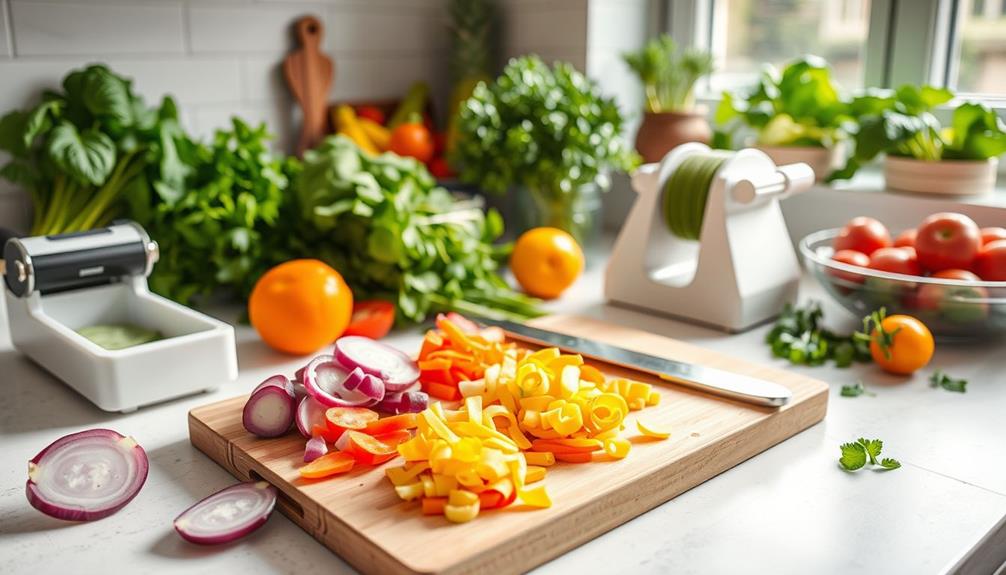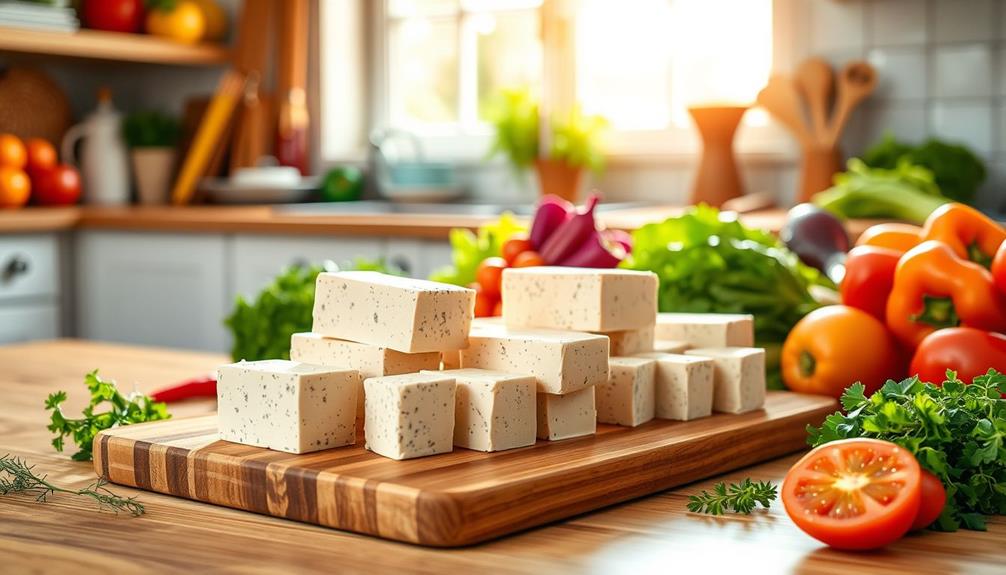When preparing raw food, never rinse raw meat, as it can spread harmful bacteria like Salmonella. Avoid cross-contamination by using separate cutting boards and utensils for raw meat and other foods. Don't thaw meat at room temperature; use the fridge or cold water instead. Always cook meat to the proper temperatures, like 165°F for poultry. Keep your surfaces clean and dispose of packaging immediately to prevent contamination. Finally, never use expired ingredients; they can lead to food poisoning. Stick around, and you'll discover even more essential tips to keep your food safe and delicious! When it comes to preparing raw food recipes, it’s important to follow these food safety tips to ensure the health and well-being of yourself and your loved ones. By incorporating these practices into your cooking routine, you can enjoy delicious, fresh meals without the risk of foodborne illness. Whether you’re handling raw meat, poultry, or seafood, these guidelines will help you maintain a clean and safe kitchen environment for all your culinary endeavors.
Key Takeaways
- Never rinse raw meat, as it can spread harmful bacteria to kitchen surfaces.
- Avoid using the same cutting board for raw meat and produce to prevent cross-contamination.
- Do not thaw meat at room temperature; always use the refrigerator or cold water methods.
- Never ignore cooking temperatures; always use a food thermometer to ensure meat is safely cooked.
- Avoid using expired ingredients, as they can cause serious health risks and food poisoning.
Avoid Rinsing Raw Meat
When it comes to preparing raw meat, it's vital to avoid rinsing it. Rinsing can actually increase the risk of cross-contamination by spreading bacteria like Salmonella and E. coli to other surfaces in your kitchen. The USDA emphasizes that proper cooking is the safest method for meat preparation, as it effectively kills any harmful bacteria present.
Additionally, understanding the importance of safe food handling practices is significant in preventing foodborne illnesses, similar to how cold medications should be used based on symptoms.
Instead of rinsing, focus on safe handling practices. Always wash your hands thoroughly before and after handling raw meat. Remember to sanitize surfaces that come into contact with raw meat to prevent contamination. By doing so, you minimize the chances of spreading foodborne illness.
When you rinse raw meat, splashing can transfer bacteria to utensils, cutting boards, and countertops, creating a higher risk of cross-contamination. This increases the likelihood of illnesses caused by undercooked or contaminated food.
Proper cooking is key to ensuring safety, as it eliminates any harmful pathogens. So, skip the rinse and concentrate on safe handling techniques. By avoiding rinsing and following these practices, you'll keep your kitchen safe and reduce the risk of foodborne illnesses.
Never Cross-Contaminate
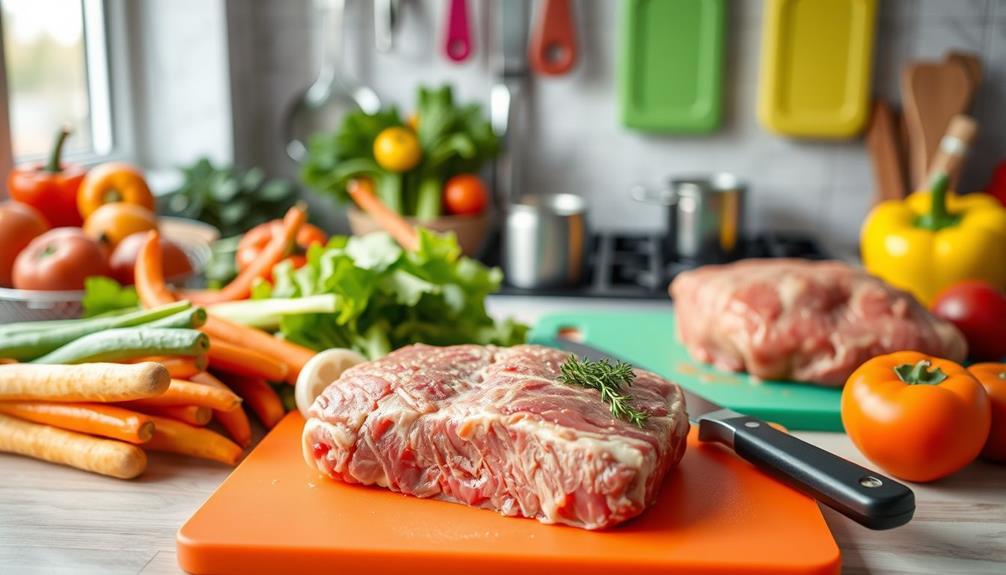
To keep your food safe, always use separate cutting boards for raw meat and fresh produce. This practice is essential, especially when handling protein-rich foods, to prevent any potential signs of illness that can arise from bacteria.
Proper storage techniques, like keeping raw items on the bottom shelf of your fridge, also help prevent harmful bacteria from spreading. By being mindful of these practices, you can greatly reduce the risk of cross-contamination in your kitchen.
Separate Cutting Boards Use
Using separate cutting boards is essential in food preparation, especially when handling raw meat and fresh produce. This practice helps prevent cross-contamination, a leading cause of foodborne illness. By designating specific boards for different food types, you can considerably reduce the risk of harmful bacteria spreading.
Additionally, keeping your kitchen air clean is critical for overall food safety, as poor air quality can also contribute to the risk of contamination air quality considerations.
Consider implementing a color-coding system for your cutting boards:
- Red for raw meat
- Green for fresh produce
- Yellow for cooked foods
- Blue for seafood
After using a cutting board for raw meat, always wash it thoroughly with hot, soapy water before using it for other foods. Remember that juices from raw meat can contaminate utensils and surfaces meant for ready-to-eat foods, so it's essential to keep those separate.
Additionally, store raw meat on the bottom shelf of the refrigerator in separate containers to minimize the risk of juices dripping onto other items.
Proper Storage Techniques
Proper storage techniques are essential in maintaining food safety and preventing cross-contamination. Always store raw meat on the bottom shelf of your refrigerator. This prevents any juices from dripping onto other foods, which can lead to harmful bacteria spreading.
To further minimize risks, keep raw meat and seafood in leak-proof containers. This way, if spills occur, they won't contaminate other items. Understanding the importance of financial considerations for elderly care can also help you plan for a safe and healthy kitchen environment.
When preparing food, remember to use separate cutting boards and utensils exclusively for raw meat. This practice helps avoid transferring bacteria to ready-to-eat foods.
When shopping, follow these shopping tips: place raw meat in separate bags from fresh produce and ready-to-eat items. This step greatly reduces the chances of cross-contamination during transport.
Regularly check your refrigerator and pantry for expired meat products. Discard any that are spoiled to maintain a safe food storage environment.
Do Not Reuse Utensils
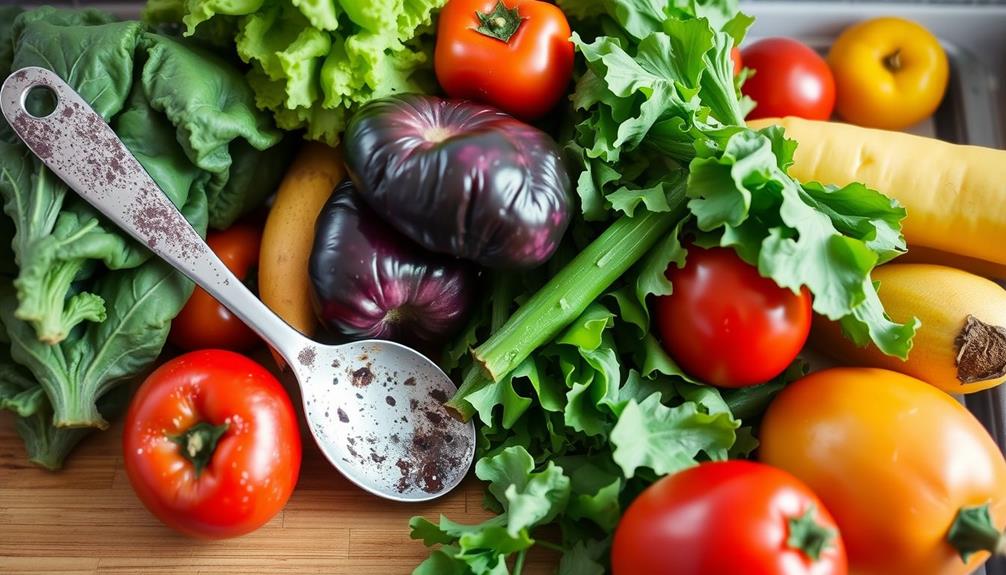
When preparing raw food, it's essential not to reuse utensils that have touched raw meat. Doing so can transfer harmful bacteria to your cooked foods, greatly increasing the risk of foodborne illness.
To guarantee a safe cooking environment, follow these key practices:
– Use separate utensils for raw meat and other food items to prevent cross-contamination.
Regular cleaning of prep areas is important, as preventing cross-contact is critical for kitchen safety.
- Wash cutting boards and utensils with hot, soapy water immediately after handling raw meat.
- Designate specific utensils for raw meat and label them to avoid accidental reuse in other food preparations.
- Maintain strict hygiene practices in the kitchen, as bacteria can survive on utensils for extended periods.
Skip Improper Thawing Methods
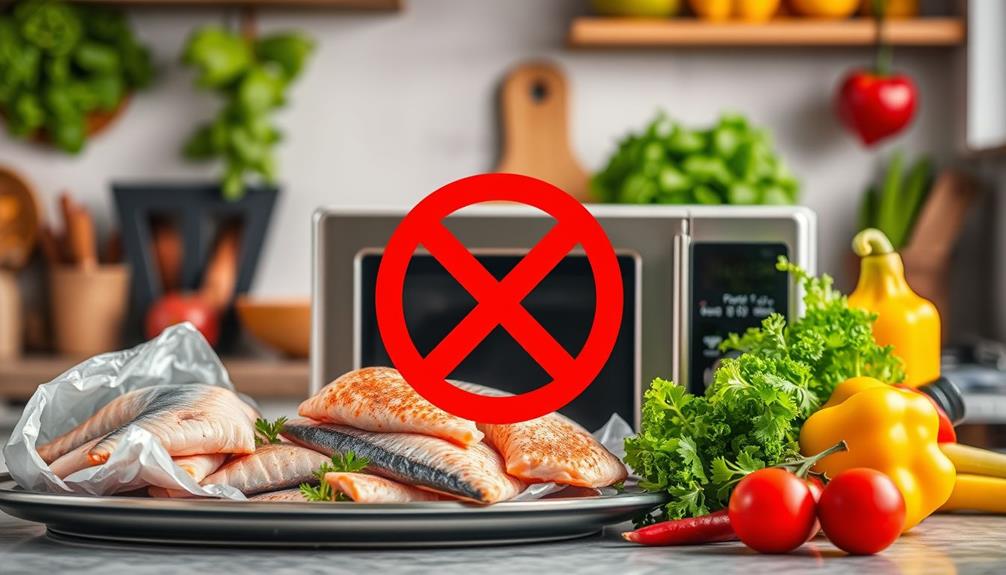
Thawing raw meat safely is vital to preventing foodborne illnesses. Never thaw raw meat at room temperature. This allows bacteria to multiply rapidly, increasing your risk of foodborne illness. Instead, always use the refrigerator for thawing. This method keeps the meat below 40°F, which prevents bacterial growth and guarantees food safety.
Additionally, verify that your kitchen is clean and free from contaminants, as this can further reduce the risk of cross-contamination when handling raw foods.
If you need to thaw meat quickly, you can use cold water. Just make sure the meat is sealed in a leak-proof bag and cook it immediately after thawing. Using a microwave is another option, but remember to cook the meat right after thawing since some areas might start cooking and could reach unsafe temperatures.
It's important to avoid refreezing thawed meat unless you've cooked it first. Refreezing can compromise not only food safety but also the quality of the meat.
Don't Ignore Cooking Temperatures
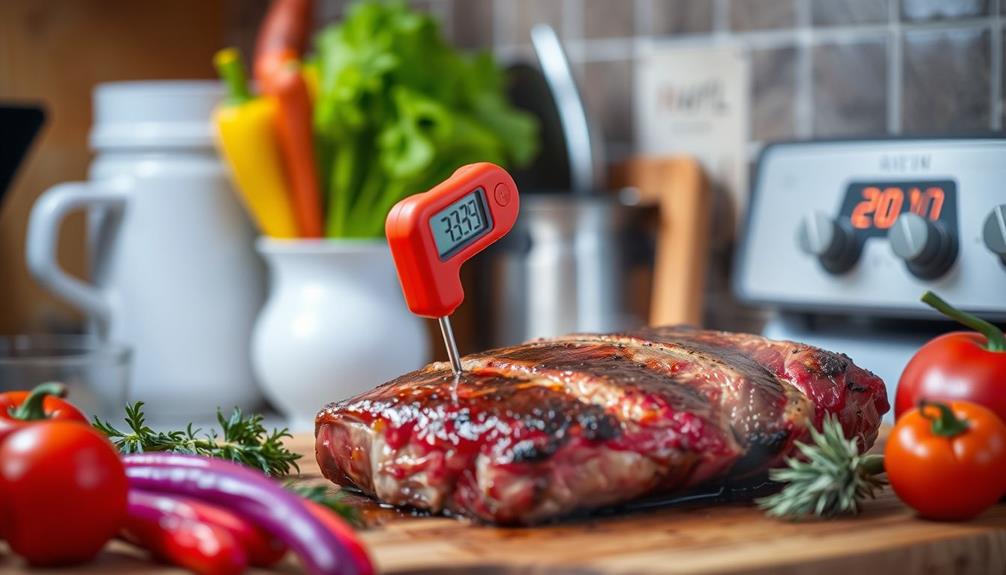
When you're cooking, don't overlook the importance of safe internal temperatures. Always use a food thermometer to check that your meat reaches the recommended heat, ensuring both safety and flavor.
Monitoring cooking times and temperatures is key to preventing harmful bacteria while delivering delicious results.
Additionally, just as with mammography guidelines, being meticulous about your cooking techniques can greatly enhance the quality of your meals.
Safe Internal Temperatures
Understanding safe internal temperatures is crucial for food safety and preventing foodborne illnesses. By knowing the proper cooking temperatures, you can guarantee that harmful bacteria are eliminated, making your meals safer to enjoy.
Always use a food thermometer to verify that your meat is cooked to the minimum internal temperature, as a well-planned budget can help you allocate funds for high-quality ingredients.
Here are some key safe internal temperatures to keep in mind:
- Poultry: Cook to at least 165°F to eliminate harmful bacteria.
- Beef, Pork, Lamb, and Veal: Cook to a minimum internal temperature of 145°F and let it rest for three minutes.
- Ground Meats: Ascertain they reach 160°F to prevent foodborne illnesses.
- Fish and Seafood: Cook until they reach 145°F or until they're opaque and flaky.
Never rely on color or texture alone to determine if your cooking meat is done. Always verify with a food thermometer for accurate temperature readings.
Use a Food Thermometer
A reliable food thermometer is your best ally in the kitchen, making certain that every piece of meat reaches a safe internal temperature. Ignoring cooking temperatures can lead to harmful bacteria lurking in your meals, resulting in foodborne illnesses. For instance, poultry must be cooked to at least 165°F, while ground meats like beef and pork should hit a minimum of 160°F. By using a food thermometer, you can effectively eliminate risks.
Here's a quick reference table for safe cooking temperatures:
| Type of Meat | Safe Internal Temperature | Notes |
|---|---|---|
| Poultry | 165°F | Prevents foodborne illness |
| Ground Meats | 160°F | Kills harmful bacteria |
| Beef, Pork, Lamb, | 145°F | Rest for 3 minutes |
| and Veal | Guarantees even cooking | |
| Fish and Seafood | 145°F | Opaque and flaky when done |
Always check your cooking methods and verify you avoid cross-contamination. Consistently using a food thermometer can greatly reduce the risk of foodborne illnesses, keeping you and your loved ones safe. Don't take chances—measure carefully!
Monitor Cooking Times
Monitoring cooking times is essential for guaranteeing your meals aren't only delicious but also safe to eat. By keeping an eye on cooking temperatures and using a food thermometer, you can prevent food poisoning and eliminate harmful bacteria.
Additionally, understanding the efficiency of your cooking appliances can contribute to better meal preparation and safety, as some devices are designed with advanced technology for peak performance advanced technology features.
Here are some vital tips you should follow:
- Always cook poultry to a safe internal temperature of 165°F.
- Beef and pork should reach at least 145°F and rest for 3 minutes.
- Ground meats must hit 160°F to confirm all harmful bacteria are killed.
- Fish and seafood should be cooked to 145°F or until they're opaque and flaky.
Avoid the temptation to partially cook raw meat for later finishing, as this can lead to uneven cooking and increase the risk of foodborne illness.
It's important to regularly monitor cooking times and temperatures in your kitchen. Logging these details not only helps maintain compliance with food safety guidelines but also minimizes the chances of cross-contamination.
Avoid Unclean Surfaces

To keep your raw food safe, always guarantee your surfaces are clean before you start preparing meals. Unclean surfaces can harbor harmful bacteria and pathogens that pose serious health risks.
Begin by thoroughly cleaning countertops and cutting boards with hot soapy water before and after handling raw foods. This simple step helps eliminate any lingering bacteria. Using essential oils like tea tree oil can also provide antimicrobial properties that further aid in maintaining a hygienic cooking environment, ensuring your surfaces aren't only clean but also protected from harmful microbes antimicrobial properties.
To prevent cross-contamination, use separate cutting boards for raw meat and other food items. Color-coded boards make it easy to identify which is which, reducing the risk of mixing raw and cooked foods.
After handling raw food, regularly sanitize surfaces with a bleach and water mixture—just one tablespoon of bleach per gallon of water will do the trick.
Don't forget about disposable packaging materials; dispose of them immediately after use to prevent any lingering bacteria from contaminating your food preparation areas.
And remember, never place raw food directly on unclean surfaces or utensils. This practice can transfer harmful pathogens to your food, increasing the risk of foodborne illness.
Never Use Expired Ingredients
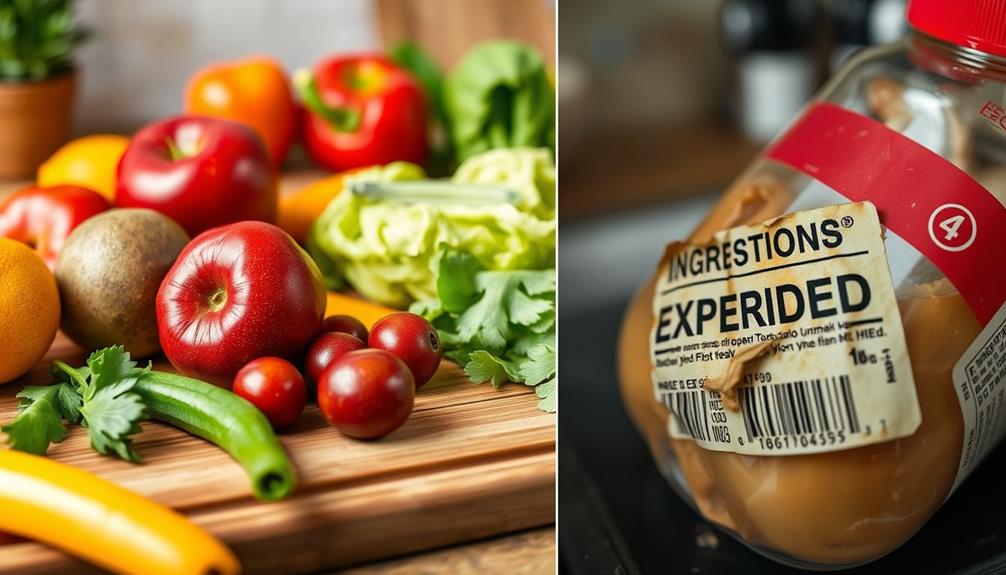
Using expired ingredients can greatly jeopardize your health and the quality of your meals. You should never use expired ingredients, as they can lead to foodborne illness. Harmful bacteria may proliferate in food past its sell-by or expiration date, putting you at risk for serious health issues.
Consuming expired meat, dairy, or produce can result in nausea, vomiting, diarrhea, and other symptoms of food poisoning. In addition to dairy products like butter, which can spoil quickly, it's crucial to recognize that using butter storage tips can help you maintain freshness and safety in your cooking.
To guarantee your cooking remains safe and enjoyable, keep these tips in mind:
- Always check the sell-by or expiration dates on packaging before use.
- Inspect your pantry and refrigerator regularly to dispose of expired items.
- Be aware that expired products may have compromised flavor, texture, and nutritional value.
- Understand that using expired ingredients can pose serious health risks.
Don't Overlook Food Storage

Storing food properly is just as important as using fresh ingredients. When it comes to raw meat, always place it on the bottom shelf of your refrigerator. This helps prevent juices from dripping onto other foods, reducing the risk of cross-contamination. Make sure your refrigerated meat stays below 41°F to inhibit bacterial growth and maintain food safety.
To further protect your meals, use separate, leak-proof containers for raw meat. This minimizes the chance of bacteria spreading to other food items, keeping everything safe and fresh.
Don't forget to label and date all meat products. This simple step helps you track freshness and discard any expired meat promptly.
Organize your food storage by cooking temperature requirements. Place meats requiring higher cooking temperatures at the bottom to avoid cross-contamination with other items.
Frequently Asked Questions
When Preparing Raw Food What Should You Never Do?
When preparing raw food, you shouldn't rinse meat or poultry, use the same cutting boards, or leave food out too long. Always wash your hands and never reuse marinades without boiling them first.
What Should You Not Do Before Preparing Food?
Did you know that 48 million people get sick from foodborne illnesses each year? Before preparing food, you shouldn't leave perishables out too long, use dirty utensils, or skip washing your hands. Stay safe!
What Precautions Should Be Taken Before Eating Raw Food?
Before eating raw food, you should wash your hands, use separate utensils, store items correctly, and check for freshness. If it looks or smells off, don't take the risk—just toss it out.
What Are the Rules for Raw Food?
When handling raw food, you've got to wash your hands, use separate utensils, and store meat properly. Don't rinse raw meat, and always discard packaging promptly to keep everything safe from harmful bacteria.
Conclusion
In summary, keeping your raw food preparation safe is vital for your health. By avoiding rinsing raw meat, cross-contamination, and using expired ingredients, you're setting yourself up for success. Isn't it worth a little extra caution to enjoy your meals without worry? Remember to store your food properly and always cook to the right temperatures. With these essential tips in mind, you can confidently whip up delicious, safe dishes every time!

